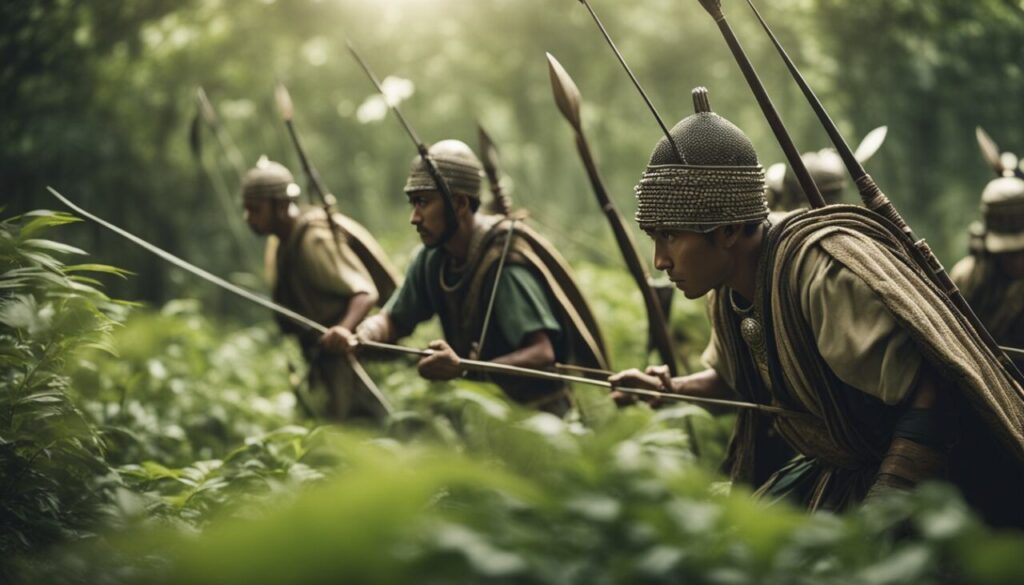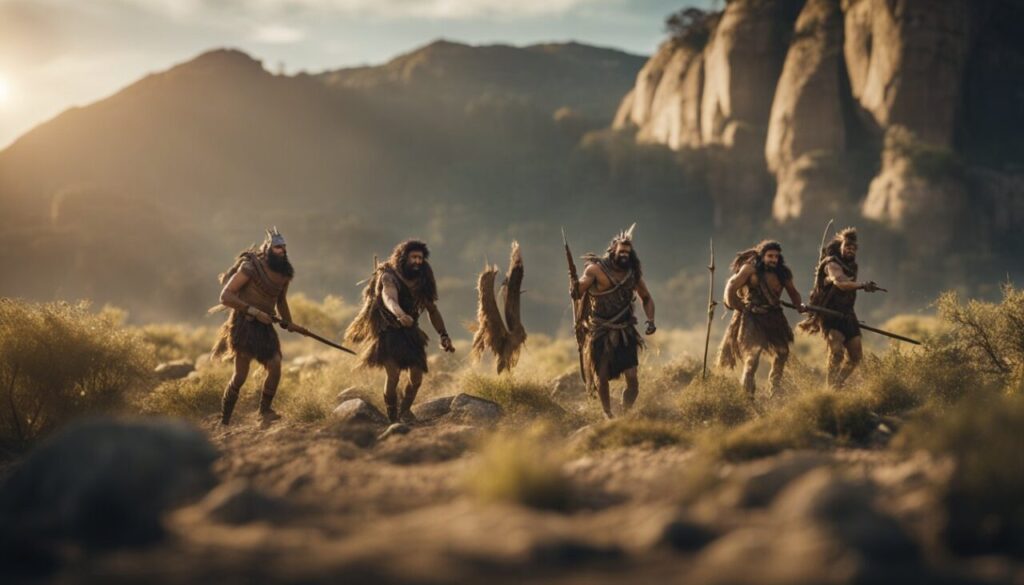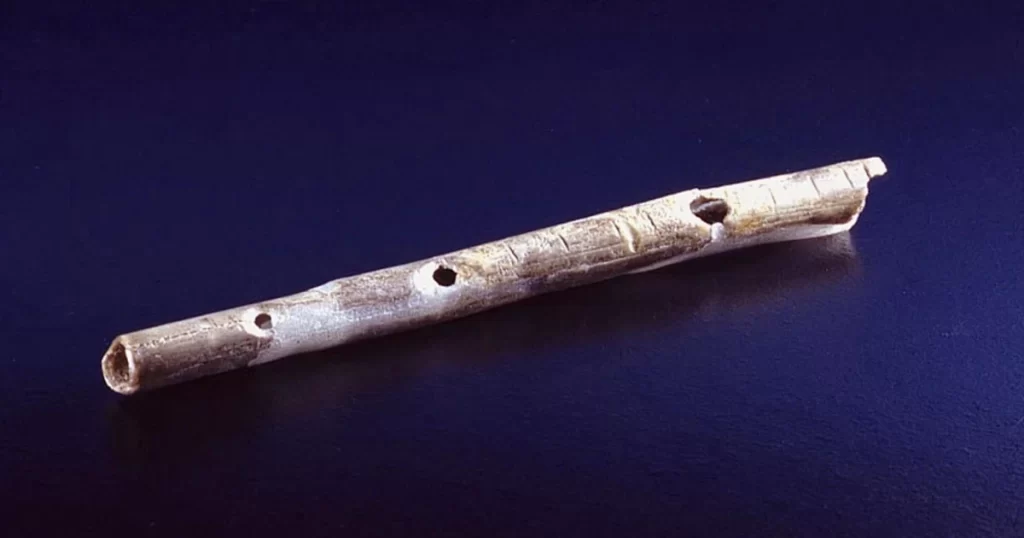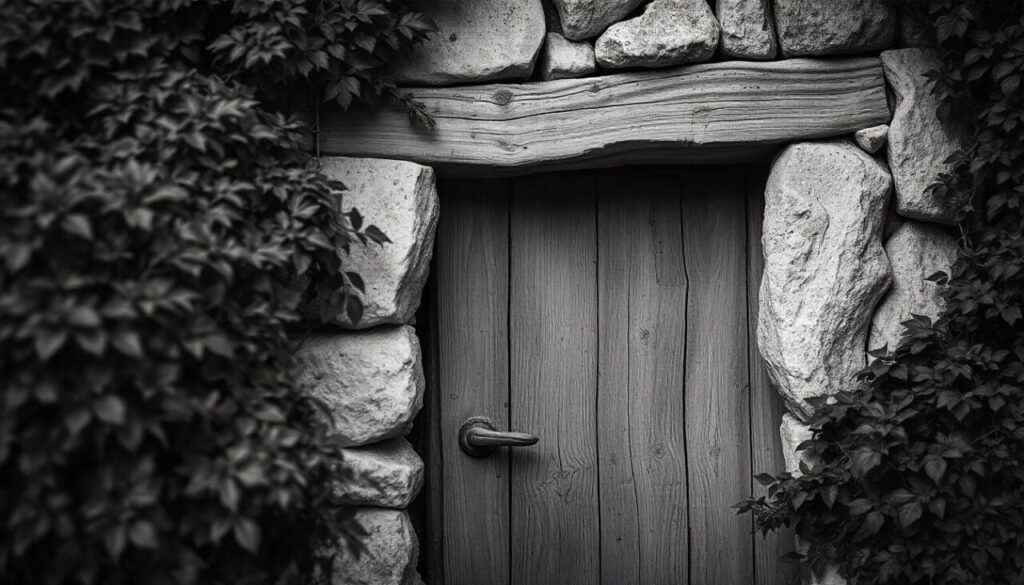
We often say that life was much simpler in historic times. And while that might be true in some ways, realistically, people led much tougher lives than we do today.
Namely, 10000 years ago was the beginning of what we now call the Neolithic period, a time when people were starting to transition from nomadic lifestyles to settling down, forming communities, and learning to grow their own food.
It really wasn’t some peaceful, harmonious era where everyone sat around a fire singing.
People were mostly figuring out how to survive. They had to adapt to their environment in ways that we can not even begin to think about today.
The Struggle for Food

Of course, back then, food wasn’t something you could just grab from a shelf. Hunting was a critical part of life.
People used handmade tools—spears, bows, arrows—to bring down big game like deer, elk, and mammoths.
They crafted these weapons with stone, wood, and animal sinew (tendon). Hunting wasn’t just for the sake of a meal, though.
They used every part of the animal—fur for clothes, bones for tools, and of course, the meat for food.
On the flip side, farming was beginning to catch on, though it wasn’t as widespread as you might think. People were learning to cultivate wheat, barley, and other crops, but farming was hard, risky work.
One bad season and a family could be done for.
As you can imagine, there were no grocery stores to fall back on. The men were still out hunting while the women cared for small plots of land near their homes.
Interesting fact: The first form of agriculture may have involved simply throwing seeds into a pit, covering them with soil, and hoping for the best. There were no grand irrigation systems or plows.
Shelter and Community: Mud, Wood, and Stone

Forget your modern house with brick walls and a nice roof.
If you were living 10,000 years ago, you’d probably be in a home made of mud, wood, and stone. The very first “houses” were small and small, usually built by a river or lake.
Why?
Well, water was everything—drinking, bathing, cleaning animals, and fishing. People would gather around these water sources in groups, forming the earliest villages.
But even then, you wouldn’t find anything close to what we’d call privacy today. Communities were very tight-knit, and everyone shared the space.
These early homes were often circular huts, with roofs made of thatch and walls of mud bricks. And while it sounds rough, it was an improvement. Before that, people were sleeping in caves or under improvised shelters.
Interesting fact: Some early homes had a special pit where they stored food, covered it with ash to keep the bugs away, and left it there for months at a time.
A Day in the Life

A typical day wasn’t what you’d call relaxing. Not at all.
You woke up at dawn, just as the light hit the horizon, because you had no choice.
There were animals to hunt, plants to gather, and food to prepare. If you didn’t work, you didn’t eat. It’s as simple as that. There was no time to be lazy.
That’s not to say they didn’t have their rituals.
Archaeological evidence shows that many early humans engaged in ceremonies—some of them downright strange. Skulls, bones, and even entire animal carcasses have been found buried near homes and in caves, suggesting early forms of ancestor worship or animal worship.
There’s also evidence that people believed certain animals held magical properties.
So, since we’ve already touched upon some strange habits let’s continue in that manner.
Interesting fact: In some places, people buried their dead under the floors of their homes, placing the skulls in a central room for ritualistic purposes.
Strange Habits of People 10000 Years Ago

So let’s begin, this is the most interesting part. Namely, people living 10,000 years ago had some “interesting” behaviors that, from today’s viewpoint, seem ultra bizarre.
Human Skulls as Drinking Cups
In some ancient cultures, skulls were not just part of burial rituals—they became everyday objects. Evidence from archaeological sites shows that people cleaned out human skulls and shaped them into drinking cups.
This may have been a part of rituals, or it could have been a practical solution in a world where tools and resources were rare.
Shamanic Bone Flutes

Music wasn’t just for entertainment 10,000 years ago—it had a mystical side, too. Shamanic traditions involved using bone flutes, which were often made from the bones of birds or even humans.
These instruments were thought to summon spirits or bridge the gap between the living and the dead. It wasn’t just music; it was a form of communication with the spirit world.
Tooth Removal Ritual
In some cultures, losing teeth wasn’t just from wear and tear—it was intentional. Teenagers or young adults would have certain teeth deliberately knocked out as part of their initiation into adulthood.
These rituals, usually done without any pain relief, marked a transition into maturity and were often celebrated by the community.
Strange Diets and Even Stranger Practices

People ate whatever they could find. Meat from hunted animals, fish from rivers, plants, seeds, berries—nothing was off-limits.
Some evidence even points to cannibalism in certain groups. But before you freak out, consider that this wasn’t the standard menu item. It was more of a survival tactic when food was scarce, or it could have been a bizarre ritual to absorb the strength of an enemy.
Another weird thing?
People didn’t just eat the obvious stuff. Evidence shows that early humans experimented with their diets, eating bugs, grubs, and even tree bark. It sounds gross now, but it was all about staying alive.
Interesting fact: In some ancient graves, archaeologists have found the remains of honeybees and honeycombs, which suggests that people had figured out how to harvest honey over 10,000 years ago.
Early Medicine

If you got sick back then, you were in trouble. A big trouble. There were no hospitals, no pharmacies, no antibiotics.
What you had were herbs, prayers, and some very basic surgical tools. Yes, surgery.
There’s evidence that some early humans performed trepanation—literally drilling holes into people’s skulls to release evil spirits or cure headaches.
Not exactly the spa day you’d want after a long week.
Herbal remedies were also common, but it wasn’t like there was a medicine cabinet full of options.
They had to figure out which plants worked by trial and error, and some of those cures did more harm than good.
However, some ancient remedies have survived in various forms and are still used in traditional medicine today.
Interesting fact: The earliest form of stitches involved using ants to clamp wounds closed. The ants would bite the skin, and their jaws would hold the flesh together until it healed.
Fun and Games: The Early Human Version

It wasn’t all work and no play. Archaeologists have found evidence of primitive games and toys, suggesting that early humans found time to have fun.
Simple items like carved sticks, bones, or even stones may have been used in early versions of dice games.
Music, too, was a part of life. As mentioned previously, flutes made of bone have been discovered, and these instruments likely played a role in rituals or just passed the time.
Interesting fact: Some of the earliest musical instruments were made from bird bones and date back as far as 40,000 years ago, which means people were jamming long before iPods were a thing.
Relationships and Roles: Who Did What?

Men and women had pretty much strictly defined roles in early human societies. Men hunted, women gathered, and both played a role in child-care.
But don’t get the idea that it was some peaceful division of labor. People argued over duties, and there’s much evidence of early power struggles.
Chiefs or strong leaders often controlled resources like food and tools, and this could cause tension.
Marriage as we know it didn’t exist. Relationships were more fluid, based on survival and community needs.
Some researchers believe there were polygamous relationships, while others suggest monogamy was more common. There’s no clear-cut answer because, like us, ancient humans were complicated.
And what about love making?
Well, we don’t have much evidence of that, but certainly, it was not lovemaking as we know it today. Males probably forced many women in a rush of desire.
Besides that, people lived in small groups and shared their living spaces, which meant they didn’t have the same rules about who could be with whom.
Interesting fact: In some early societies, women were the primary decision-makers when it came to managing food and resources, challenging the idea that ancient societies were entirely male-dominated.
So How Was It?

Well, to give best representation on how was life like 10000 years ago let’s make a comparison table with today’s life:
| Aspect of Life | 10,000 Years Ago | Life Today |
| Housing | Mud, wood, and stone huts near rivers and lakes | High-rise buildings, modern homes with electricity, and running water |
| Food Acquisition | Hunting and basic farming, foraging for plants | Supermarkets, restaurants, global food supply chains |
| Communication | Spoken language, basic gestures, cave paintings | Instant messaging, video calls, social media, global connectivity |
| Medicine | Herbal remedies, bloodletting, trepanation | Advanced hospitals, antibiotics, surgeries, vaccines |
| Clothing | Animal hides and furs, handmade with bone tools | Mass-produced clothing, synthetic fabrics, fast fashion |
| Transportation | Walking, using animals for transport | Cars, planes, trains, and electric vehicles |
| Community Structure | Tight-knit, small groups, early villages | Large cities, virtual communities, global networks |
| Entertainment | Games with carved bones, music from bone flutes | Streaming services, video games, theme parks, concerts |
| Spiritual Beliefs | Earth, animal, and ancestor worship | Organized religions, atheism, personal spirituality |
| Diet | Meat, wild plants, bugs, honey | Different diets, processed food, vegetarian |



























